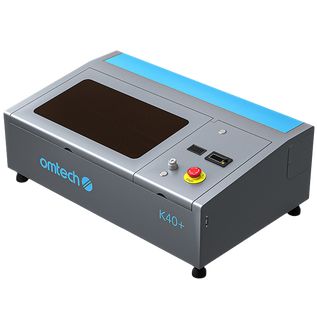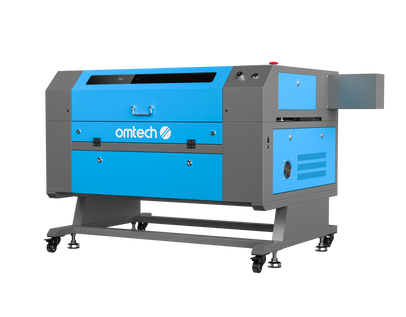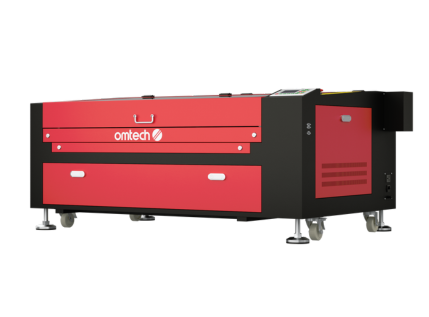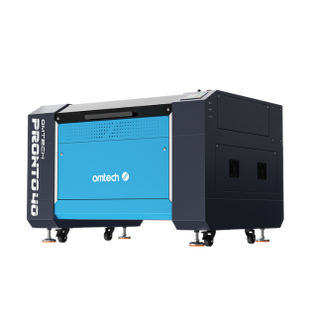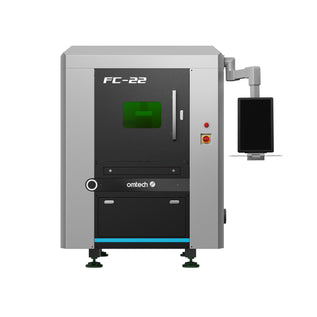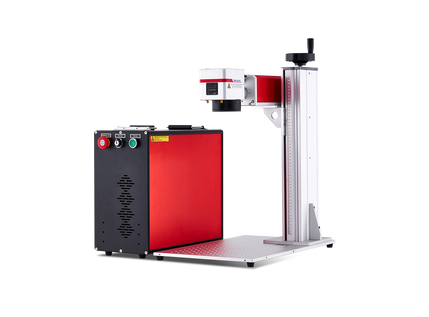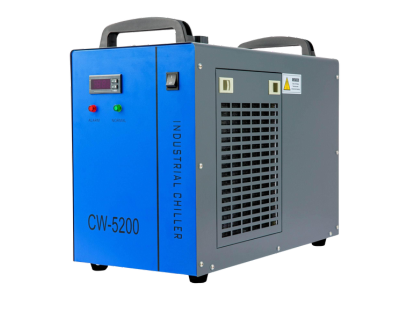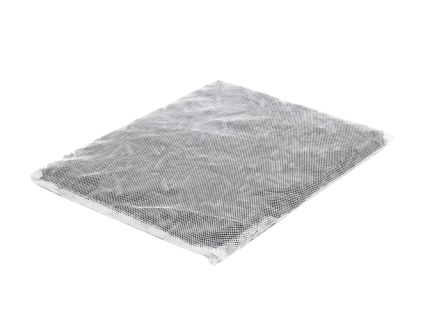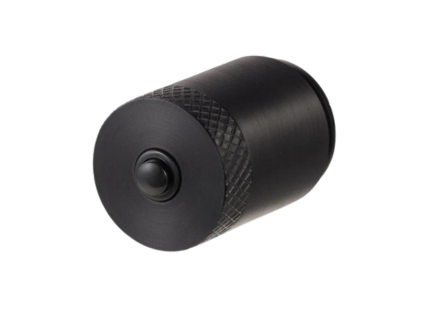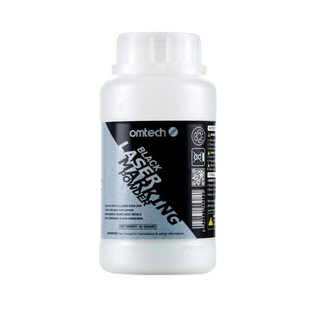Full Guide to Laser Engraving Materials for OMTech K40+
The OMTech K40+ is a popular machine for makers, educators and small business owners around Australia. This 40W CO₂ laser engraver delivers accuracy, convenience and versatility as the ideal tool for making custom gifts, signage, and other projects To get the most out of your OMTech K40+, you should always know what laser engraving materials will work in this machine. The materials you choose can have a significant impact on how well you engrave, what’s safe for you, and how long your engraver will last. In this article, we'll provide a complete list for of materials that can safely be used with the OMTech K40+, as well as some helpful engraving notes and safety considerations.

Compatible Laser Engraving Materials
The OMTech K40+ can be safely used with the following materials:
Plastics
• Acrylonitrile Butadiene Styrene (ABS)
• Nylon (Polyamide, PA, etc.)
• Polyethylene (PE)
• High-Density Polyethylene (HDPE, PEHD, etc.)
• Biaxially-oriented Polyethylene Terephthalate (BoPET, Mylar, Polyester, etc.)
• Polyethylene Terephthalate Glycol (PETG, PET-G, etc.)
• Polyimide (PI, Kapton, etc.)
• Polymethyl Methacrylate (PMMA, Acrylic, Plexiglass, Lucite, etc.)
• Polyoxymethylene (POM, Acetal, Delrin, etc.)
• Polypropylene (PP, etc.)
• Styrene
Others
• Cardboard
• Ceramics, including Dishes, Tile, etc.
• Glass
• Leather
• Paper & Paperboard
• Rubber
• Stone, including Marble, Granite, etc.
• Textiles, including Cotton, Suede, Felt, Hemp, etc.
• Wood, including Cork, MDF (Medium Density Fiberboard), Plywood, Balsa, Birch, Cherry,
Oak, Poplar, etc.
Materials You Should Avoid
The machine CAN NOT be used with the following materials or with any materials that include them:
• Artificial Leather containing Hexavalent Chromium (Cr [VI]), due to its toxic fumes
• Astatine, due to its toxic fumes
• Beryllium Oxide, due to its toxic fumes
• Bromine, due to its toxic fumes
• Chlorine, including Polyvinyl Butyral (PVB) and Polyvinyl Chloride (PVC, Vinyl, Sintra, etc.),
due to its toxic fumes
• Fluorine, including Polytetrafluoroethylenes (Teflon, PTFE, etc.), due to its toxic fumes
• Iodine, due to its toxic fumes
• Metals, due to their conductivity and reflectivity Phenolic Resins, including various forms of Epoxy, due to their toxic fumes
• Polycarbonate (PC, Lexan, etc.), due to its toxic fumes
For all other materials, if you are unsure about its safety or laserability with this engraver, seek out its material safety data sheet (MSDS). Pay special attention to information about safety, toxicity, corrosiveness, reflectivity, and reaction(s) to high heat. Alternatively, contact our support department for further guidance.
Engraving Instructions by Material
Ceramics
When engraving on ceramics, generally use moderate to high power. Using more loops rather than higher power and lower speed can help avoid cracking the material during work. Be mindful of the health risks posed by dust generated from ceramic engraving, especially for repetitive industrial applications. Depending on the material and the amount of work, a fan or even a full ventilation system may be required to address the problem. Similarly, operators and others in the work area may need to use breathing PPE such as masks and respirators.
Glass

When engraving glass, generally use high power and low speed. As with ceramics, it can be helpful to run more loops at lower settings to avoid cracks. Care must be taken when engraving fiberglass and carbon fiber to avoid combinations of settings that produce a laser intensity great enough to damage the structural integrity of its component fibers, producing blurry markings. PPE should be worn to avoid exposure of the eyes, nose, mouth, and skin to the dust produced by working with either material, especially for repetitive industrial applications. Clothing worn while working with fiberglass should be washed separately afterward.
Leather
When engraving leather products, generally use low to moderate power at high speed. Be
especially attentive to the possibility of fire, as well as the dust produced in repetitive applications.
Metal

CO₂ laser engravers should not be used for marking, engraving, or cutting metal. They are best suited for working coatings applied to a metal base, and care must be taken not to attempt work on the underlying metal itself. A variety of coatings specialized for CO₂ engraving are available, and the user should follow the instructions provided as the parameters vary from product to product and metal to metal. Generally, work on aluminum coatings should be done more quickly at lower power and work on steel coatings can be done more slowly at higher power.
Paper and Cardboard
When engraving various paper products, generally use low to moderate power and fast speed. Test samples from each batch, as only small parameter differences can separate effects that are too light from those that burn through the substrate. As with leather, be especially attentive to the possibility of fire, as well as the dust produced in repetitive applications.
Plastics
Plastics for engraving are available in many different colors and thicknesses and with many
different coatings and surfaces. The majority of available plastics can be well engraved and cut with the laser. Plastics with a microporous surface seem to give the best result because less surface material needs to be removed. When engraving plastics, generally use low-power and high-speed settings. Marking and engraving with too much power or at too low a speed can concentrate too much energy at the point of contact, causing the plastic to melt. Among other problems, this may produce poor engraving quality, noxious fumes, and even fires. High-resolution engraving can cause the same problem, so medium to low-resolution designs should be preferred for most plastics.
Rubber
The various compositions and densities of rubber cause slightly varying engraving depths. Testing various settings on sample pieces of your specific rubber is highly recommended for the best results. When engraving rubber, generally use a consistent high-power setting and create your effects by varying the laser’s speed. Microporous rubber materials require a significantly higher speed than standard rubber. Engraving any kind of rubber produces a considerable amount of dust and gas. Depending on the amount of work, breathing PPE and/or a full ventilation system may be required to address the problem.
Stone
When engraving various kinds of stone, generally use moderate power and moderate to fast speed. As with ceramics and glass, be mindful of the dust created (especially for repetitive industrial applications) and take similar measures to ensure the safety of users and others in the work area.
Textiles
When engraving textiles like cloth and fleece, generally use low power and fast speed. As with leather, be especially attentive to the possibility of fire and dust.
Wood

As with rubber, there is a huge variety of woods, and testing your specific material is essential to get the best results. In general, wood with consistent grain and coloring engraves more evenly. Knotted wood produces uneven effects, while resinous wood produces greater edge contrast. Some softwoods like balsa, cork, and pine engrave well (albeit with low contrast) at low or moderate power settings and high speed. Others like fir suffer from uneven fibers that usually produce a poor effect in any setting. Hardwoods like cherry and oak engrave well at high power settings and low speed. Manufactured wood products can vary from brand to brand, mostly based on their glue composition and abundance. MDF works well but creates dark edges when cut.
In addition to the risk of fire with any wood product, extra care must be taken with the fumes from the glue used in plywood and other manufactured woods. Some are too dangerous to work with at all, while others require careful ventilation and the use of breathing PPE for repetitive industrial applications. Wood toxicity should also be examined, as the dust from some natural woods including oleander can also cause nausea and cardiac problems in high enough amounts.
Material Safety Instructions
- Users of this laser engraving machine are responsible for confirming that the materials to be processed can withstand the heat of the laser and will not produce any emissions or byproducts either harmful to people nearby or in violation of local or national laws or regulations. In particular, do not use this engraver to process polyvinyl chloride (PVC), Teflon, or other halogencontaining materials under any circumstances.
- DO NOT use high power settings at very low speeds when engraving highly flammable materials. Instead, use more repetitions of your design at low power settings to achieve a similar effect.
- Users of this laser engraver are responsible for ensuring that every person present during operation has sufficient PPE to avoid injury from the emissions and byproducts of the materials being processed. In addition to the protective laser eyewear described above, this may require goggles, masks or respirators, gloves, and other protective outer clothing. Always wear hand protection when working with metal to avoid cuts and burns.
- DO NOT ever under ANY circumstances use this laser engraver if the exhaust system is not working properly. Always ensure that the exhaust fan can remove the dust and gas produced by the engraving process in accordance with all applicable local and national laws and regulations. Immediately stop use if the exhaust fan or vent hose malfunctions. Periodically check the air assist intake filter to ensure it stays free of any dust or debris.
- Exercise special caution when working with moderately conductive materials such as carbon steel and stainless steel, as prolonged work can build up residual heat and reflective dust and particles that may damage electrical components, cause short circuits, or produce other effects including reflected laser radiation.
Conclusion
Understanding which materials are compatible with your OMTech K40+ helps you achieve cleaner, sharper engravings while keeping your workspace safe. Following OMTech’s recommended guidelines ensures optimal results and extends the life of your laser machine. For more engraving insights and community support, visit the OMTech Learning Center or join the OMTech Australia Facebook Community, where local creators share their projects, settings, and creative tips every day.




